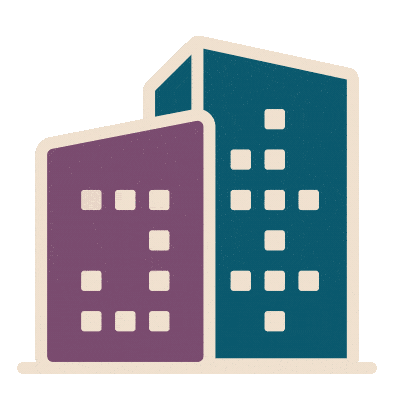Symantec
Symantec’s headquarters stands as a wellness hub in the midst of a highly competitive and globally lauded technology landscape. An early adopter of the WELL Building Standard, Symantec earned WELL Silver for its impressive home base in 2017. A cross-team collaboration involving multiple teams within Symantec, combined with external experts at Little and AP+I Design, the resulting building community is a shining example of how wellness goals in combination with strategic design can drive meaningful, health-focused change for employees.
We connected with the Symantec team, who shared details of their journey to WELL Certification with us. Read on to learn more.
Why did you decide to pursue WELL Certification? What were your objectives?
As the global leader in cyber security and one of the world’s largest cyber intelligence networks, Symantec’s workplace vision and strategy is aimed at being an early adopter of new and innovative industry trends. With this vision in mind, and the organization’s implementation of a new Global Workplace Strategy, there was an obvious need to rethink space and the importance of its influence on its occupants while providing a competitive workplace advantage.
The renovation of our headquarters in Mountain View, CA, one of the most competitive environments in the world for attracting and retaining the best and brightest talent, supports Symantec’s objectives of:
-
Making a tangible and measurable difference in the lives of employees by impacting their health and well-being
-
Enabling a culture of collaboration and innovation
-
Attracting and retaining top talent
-
Focusing on the future by bringing our Global Workplace Strategy to life.
How did your team approach the WELL Certification process, and work together to achieve your WELL goals?
Symantec partnered with Little and AP+I Design to design a healthier, more productive work environment. A meeting was held at the inception of the project, which allowed the design team to align the overarching goals of the project with shared values for occupants.
The team also began the process of aligning Symantec’s design goals with the criteria of the WELL Building Standard by triaging the standard to determine what parameters the project could meet, given that the buildings to be renovated were 15 years old.
Based on this review, the team found that all of the mandatory WELL preconditions could be met. To optimize the space, however, several areas were identified that could significantly improve Symantec’s environment, requiring a more comprehensive approach to health and wellness.
With a passion to evolve beyond WELL’s preconditions within the Air, Water and Nourishment concepts, Little and AP+I worked with Symantec. Facilities Management, Human Resources and Leadership teams worked together to develop a detailed plan for wellness-oriented features that would impact Symantec’s approach to the Light, Comfort, Fitness and Mind concepts.
What are the most innovative or stand-out aspects of your WELL project?
One of the first WELL Certified spaces in California, the Symantec workspace has achievements and stand-out aspects within all of the WELL concepts. The following are some of the unique design aspects that were created:
-
A hub that showcases a centralized, open staircase to encourage movement and spontaneous connections
-
An indoor track for walking meetings
-
Hula-hoop and jump-rope walls
-
Circadian lighting
-
Award winning state-of-the-art fitness facility
-
Flexible and adaptable furniture, including sit-stand desks and adjustable task lighting
-
Near by walking/running path that links to the local Hetch Hetchy trail
What challenges did you face as you were incorporating WELL features? How did you solve them?
The biggest challenges involved working within the restraints of an existing space and determining the most efficient way to incorporate as many WELL features as possible. Other challenges included an aggressive schedule, solved through weekly team meetings; and creating an understanding among Symantec employees around the importance of wellness in the workplace, solved through continued communication. Because Symantec was an early adopter of WELL, more collaboration with IWBI was also necessary to understand documentation and required processes for this new program.
What positive impacts resulted from your WELL Certification? What post-certification metrics can you share related to outcomes?
Employee feedback validates the success of Symantec’s goal of infusing an active culture of wellness throughout the new space.
Specific metrics include:
-
77% of employees feel the space fosters more collaboration & socialization, a 28% increase over their views toward the previous space
-
A 30% increase in employees feeling more innovative
-
The space became a campus beacon for activity
-
The central “hub” is extremely active with collaborating and socializing that brings a sense of excitement, buzz and life to the space
Employee comments:
-
“It’s refreshing to walk in, it makes you feel good.”
-
"I do calf raise exercises at my desk now because I can stand."
How has WELL Certification changed or improved your company culture or operations?
The effects of Symantec’s WELL space have rippled beyond WELL Certification to a sense of mindfulness about personal health and wellness. Symantec has implemented a “Get Up and Move” movement with cues sprinkled throughout the buildings.
This was a pivotal shift for Symantec, intended to invoke human delight, a celebration of culture through development of shared central spaces that create a sense of place and identity. Because of this project’s success, Symantec is incorporating WELL methodologies as a basis of design for future global projects.
At a glance:

Preconditions achieved

Optimizations achieved

Certification level


FITNESS
Feature 70: Fitness Equipment
Intent: To promote both cardiovascular and muscle-strengthening exercise by providing complimentary access to on-site fitness equipment.
To help employees stay active, the Symantec office features a hula hoop and jump rope wall, with signage providing information about the calories burned doing each exercise. Other wall signage at Symantec's headquarters prompts employees to walk the quarter mile loop around the office, staying fit and getting to know coworkers.

NOURISHMENT
Feature 39: Processed Foods
Intent: To help occupants avoid highly-processed ingredients and foods.
The kitchen in the Symantec office is designed to be open and welcoming, so employees feel comfortable congregating there to connect with coworkers or prepare their meals.

LIGHT
Feature 53: Visual Lighting Design
Intent: To support visual acuity by setting a threshold for adequate light levels and requiring luminance to be balanced within and across indoor spaces.
Symantec uses a combination of abundant natural light and artificial lighting inside to create an indoor environment that supports optimal circadian rhythms for employees and visitors.


Project Team
Carol Sandman, CID, LEED AP, AP+I, Principal-in-Charge
Jim Thompson, AIA, IIDA, LEED AP BD+C, Little, Director of Design
Shelley Hazliett, LEED AP, AP+I, Project Manager
Cailin McNulty, CID, AP+I, Senior Interior Designer
Becca Bellamy, IIDA, Little, Interior Designer
Vickie Breemes, CCS, LEED AP BD+C, WELL AP, Little, WELL Certification Manager/Administrator
Carol Rickard-Brideau, AIA, LEED BD+C, WELL AP (provisional), Little, WELL Building & Strategic Planner
Larry Grondahl, AIA, LEED AP, AP+I, Project Architect
Greg Horn, AP+I, Job Captain
Karrie Stegina, AP+I, Workplace Strategist & Furniture
Erin Fajardo, AP+I, Interior Designer & Furniture
Scott Brideau & Doug Stadler, Little, Interior Architecture
Owner’s Team: Symantec Workplace Team: Mike Welliver, Becky Laden, Terry Hillyard, Wally Singleton
Mountain View Facilities Team









